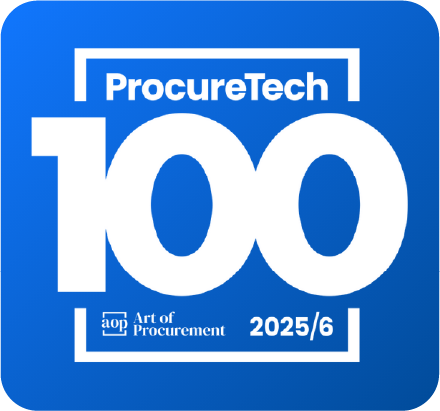Cost transparency, return on invest and integration into existing systems: These are the common requirements for procurement software. However, the requirement catalog for modern software solutions in strategic procurement is significantly more complex. After all, procurement organizations and processes are becoming increasingly complex. But what aspects—beyond return on investment & co.—are also important in a software solution? Through conversations with prospects and new customers, we have gained many insights and summarized what you should consider when implementing procurement software.
Enhancing Procurement Tool Adoption Through User-Friendliness Change management is already a challenge when it comes to introducing new systems. The less the software is tailored to the end-users and their habits, the lower the acceptance will be. Therefore, make sure that the new system features a good user experience and an intuitive user interface. User-friendliness also includes avoiding technical jargon in the menu structure or functions. Your new procurement software should provide value to your organization, not create confusion. Certainly, there is no perfect software for your company. Nevertheless, you should conduct thorough benchmarking to determine which procurement software offers flexibility and customized, client-specific adjustments.
Benefit Orientation: Evaluating the Benefits of Procurement Software Of course, any procurement software aims to optimize processes, leverage synergies, or save costs in some way. However, you should also consider what additional benefits the new procurement solution should provide. In light of the skills shortage, companies want to see the value contribution per employee increased through the use of software. If the procurement solution relieves buyers of numerous administrative tasks, they can refocus on strategic projects.
A software implementation in procurement is not done for the sake of the software itself, but due to concrete needs. Therefore, define as much as possible in advance which projects you want to tackle with the new procurement solution, or evaluate which problems the new software can help address. It is advisable to appoint an interdisciplinary team to create the requirements catalog. This team can include employees from procurement, controlling, IT, and finance, for example. This way, you not only bring in different competencies but also ensure that all systems and their functions are considered. A comprehensive benefit can also increase acceptance among management. Therefore, consider which stakeholders the new software can benefit and in what ways.
CPO & CFO: Besides the reduction of commercial risks and the increase of cost efficiency, the benefit for the CPO also lies in leading a high-performing procurement team and strengthening the reputation of the procurement organization within the company. CIO & CTO: These positions see the benefit in accelerating the digital transformation within the company while ensuring a secure launch and data security. Commodity Manager & Buyers: These positions are often the closest to the software and use it in their daily work. For them, procurement software is beneficial when it reduces workload and helps in preparing supplier negotiations and developing strategies IT Department & Data Security: When weighing the costs and benefits, it is most relevant for these stakeholders that as few resources as possible from their departments are needed for the software launch. Effective Implementation of a Procurement Software If the procurement software can score with its features, it is worth examining the services related to implementation. How is employee training conducted? How is the leadership team supported during change management? Therefore, include these aspects in your requirements catalog as well. The potential integration with existing systems should also be considered.
Additional Important Aspects when implementing a software in procurement Ensure that the new procurement software meets all necessary requirements regarding data security. Certifications from potential service providers can be helpful here. A trial phase or the option for a proof-of-concept is an advantage. During such a feasibility assessment, you can test the software, identify initial potentials, and thus make a better ROI calculation.
Maturity Level of procurement organisations as the Basis for Decision-Making Especially when introducing a high-touch product, you should take sufficient time in designing a requirements catalog. Always consider the maturity level of your own company. Knowing the current status quo and the maturity level of your procurement organization is a prerequisite for further development. Try to assess which stage your procurement organization is currently in: Is procurement acting as an operational executor of production? At this stage, procurement organizations are often not standardized or digitized. Is procurement already seen as a driver of business success? Then processes may already be digitized and fully integrated into the IT landscape. Being aware of the maturity level of your procurement organization is a crucial prerequisite for making the right decisions regarding digital transformation in your company.











